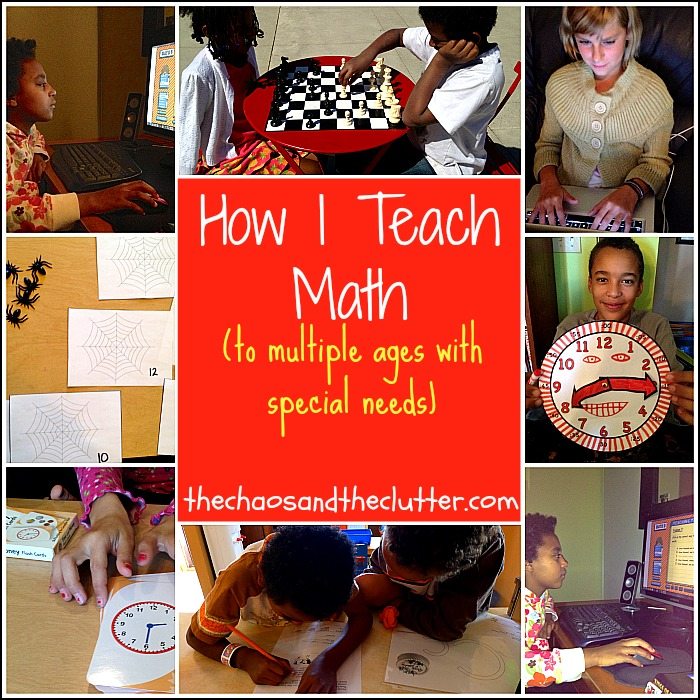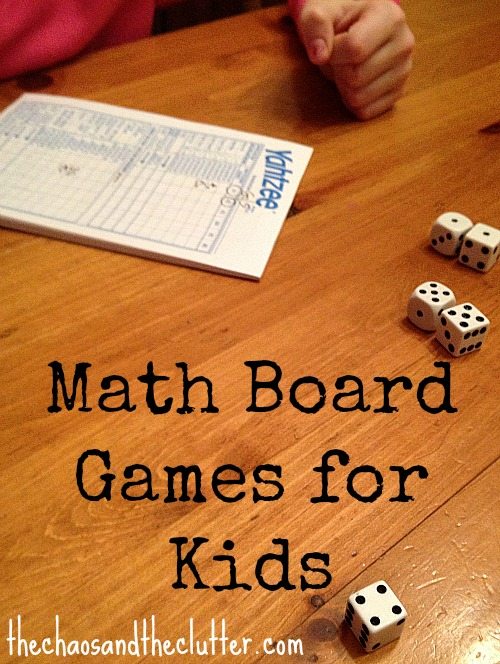I should start off by saying that Math is not my forte. In fact, I barely passed high school math and I am scared of it. Yes, I have a fear of math. For the most part, my kids have inherited my math skills and it is a weak point for them, with the exception of Snuggle Puppy and Dancing Queen. Dancing Queen has cognitive delays and is functioning at a preK level in everything else, but she is doing exceptionally well in her third grade math!
 Math is the thing about homeschooling that I am the least confident about and probably worry about the most. For this reason, it is also the thing that I am the least eclectic about, in that I use a set curriculum for most of it. We started way back then using Abeka and then switched to Math U See. Math U See served us well for a number of years because of the teacher on the DVD, the manipulatives and the slow pace but then we hit a plateau and no one seemed to be progressing.
Math is the thing about homeschooling that I am the least confident about and probably worry about the most. For this reason, it is also the thing that I am the least eclectic about, in that I use a set curriculum for most of it. We started way back then using Abeka and then switched to Math U See. Math U See served us well for a number of years because of the teacher on the DVD, the manipulatives and the slow pace but then we hit a plateau and no one seemed to be progressing.
If there is one thing that I have learned by homeschooling, it is that if something doesn’t work, change it. Also, what works for one family, will not necessarily work for another and you may even have to use one curriculum with one child and another for your other children. I knew going into this year that we were going to have to find something new.
In my quest to find a math curriculum that would be a good fit for us, I compiled a list of different reviews and opinions. I researched and second guessed and finally settled on Teaching Textbooks. So far, it’s been a really good fit for all of the kids except Einstein. I would have predicted that he would like it the most since it is on the computer but it has been like pulling teeth to get him to do his math. I may have to give him the option of buckling down with Teaching Textbooks or going back to Math U See.
For the other kids, Teaching Textbooks has been wonderful. They have enjoyed being able to do it on the computer, the immediate feedback it offers, listening to the instructions and that it is not full of busy work. I like that it includes things like days of the week and months of the year and that it goes over old concepts and mixes them in with the new so that there is ample practise and review opportunities.
The other reason it works so well for us is that the kids all have their own usernames and passwords and it saves their information to the disk so they can move at their own pace.
We also use Take it to Your Seat Math Centers in their workboxes, math printables and hands-on activities in their workboxes, multiplication flash cards, money and time flashcards, the Multiplication Rap CD, the Math U See Skip Counting CD, and unit studies.
We did a unit study earlier this year on telling time and I have one planned for later this year on money. As my kids need a lot of repetition, practise, hands-on, and practical application practise, I am have a lot of hands-on activities planned for the money unit and am going to set up a mock store at home with a cash register and pretend money for them to practise with.
We also play A LOT of cards and board games so the kids pick up math skills very naturally that way. Some of the board games are designed to teach math skills specifically while others reinforce those skills in a less obvious way. (Update: I’ve created a more specific list of math board games because of the questions about this. You can read the full list and details of how we use games for math here or by clicking the picture below.)
